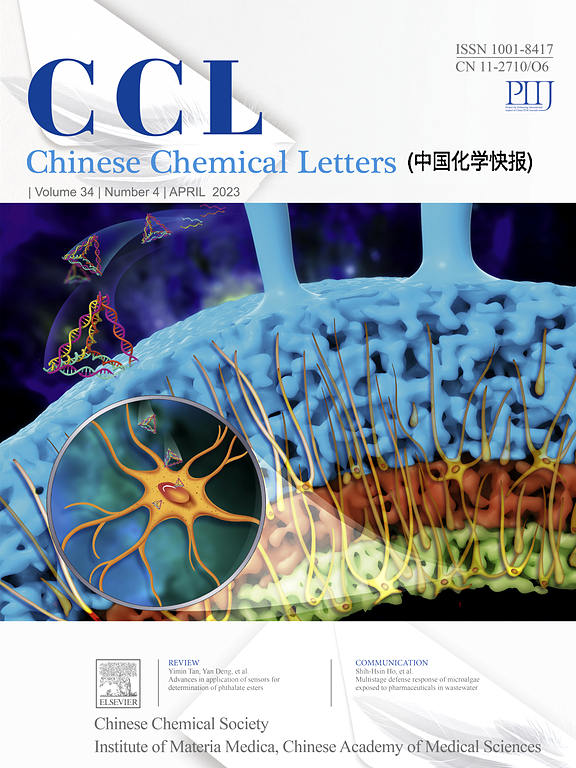合理构建zn0.5 cd0.5 s -二乙三胺/g- c3n4s方案异质结,增强光催化H2O2产率
IF 9.4
1区 化学
Q1 CHEMISTRY, MULTIDISCIPLINARY
引用次数: 0
摘要
光催化过氧化氢(H2O2)生产(PHP)具有利用太阳能、反应条件温和、环境友好、过程无污染、可持续性和高选择性等传统生产方法的显著优势。然而,尽管作为一种绿色和可持续的技术,光催化生产H2O2 (PHP)受到光催化剂对可见光吸收有限和光产生的载流子快速重组的限制,从而降低了产率和效率。在本研究中,我们通过水热法合成了有机胺约束的Zn0.5Cd0.5S-DETA/g-C3N4 (ZCS-D/CN) S-scheme异质结来增强PHP。将ZCS-D锚定在CN表面,形成s型异质结,有效地阻止了ZCS-D的团聚,调节了CN的能带结构,增强了光生载流子的迁移和氧化还原能力。优化后的异质结(ZCS-D/CN)在纯H2O条件下H2O2产率为5124µmol g-1 h-1,显著优于纯CN(24µmol g-1 h-1)和ZCS-D(4012µmol g-1 h-1)。这些结果表明,ZCS-D/CN S-scheme异质结具有很大的光催化应用潜力,特别是在高效生产H2O2方面。本文章由计算机程序翻译,如有差异,请以英文原文为准。

Rational constructing of Zn0.5Cd0.5S-diethylenetriamine/g-C3N4 S-scheme heterojunction with enhanced photocatalytic H2O2 production
Photocatalytic hydrogen peroxide (H2O2) production (PHP) offers significant advantages to traditional production methods, including solar energy utilization, mild reaction conditions, environmental friendliness, pollution-free processes, sustainability, and high selectivity. However, despite its potential as a green and sustainable technology, photocatalytic H2O2 production (PHP) is constrained by limited visible light absorption by photocatalysts and the rapid recombination of photogenerated charge carriers, which reduce yield and efficiency. In this study, we synthesized an organic amine constrained Zn0.5Cd0.5S-DETA/g-C3N4 (ZCS-D/CN) S-scheme heterojunction via a hydrothermal method to enhance PHP. Anchoring ZCS-D on the surface of CN and forming an S-scheme heterojunction effectively prevented ZCS-D agglomeration, modulated the band structure of CN, and enhanced the migration and redox capabilities of photogenerated charge carriers. The optimized heterojunction (ZCS-D/CN) achieved a H2O2 yield of 5124 µmol g-1 h-1 in pure H2O, significantly outperforming pure CN (24 µmol g-1 h-1) and ZCS-D (4012 µmol g-1 h-1). These results demonstrate that ZCS-D/CN S-scheme heterojunction holds substantial potential for photocatalytic applications, particularly in the efficient production of H2O2.
求助全文
通过发布文献求助,成功后即可免费获取论文全文。
去求助
来源期刊

Chinese Chemical Letters
化学-化学综合
CiteScore
14.10
自引率
15.40%
发文量
8969
审稿时长
1.6 months
期刊介绍:
Chinese Chemical Letters (CCL) (ISSN 1001-8417) was founded in July 1990. The journal publishes preliminary accounts in the whole field of chemistry, including inorganic chemistry, organic chemistry, analytical chemistry, physical chemistry, polymer chemistry, applied chemistry, etc.Chinese Chemical Letters does not accept articles previously published or scheduled to be published. To verify originality, your article may be checked by the originality detection service CrossCheck.
 求助内容:
求助内容: 应助结果提醒方式:
应助结果提醒方式:


